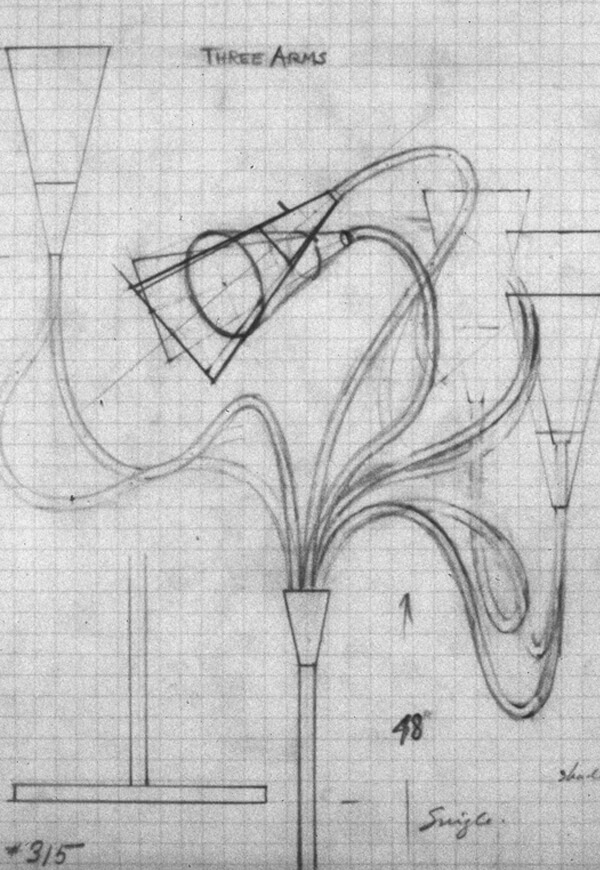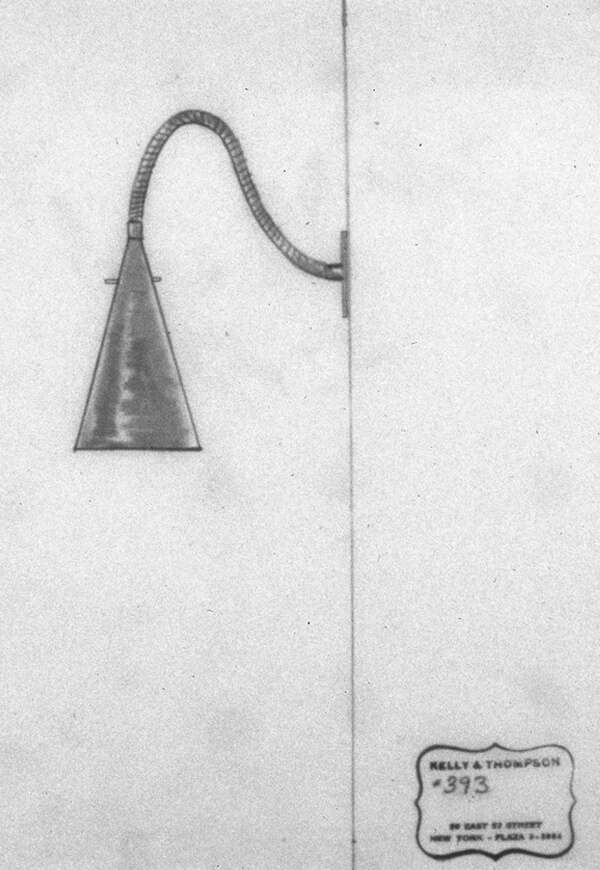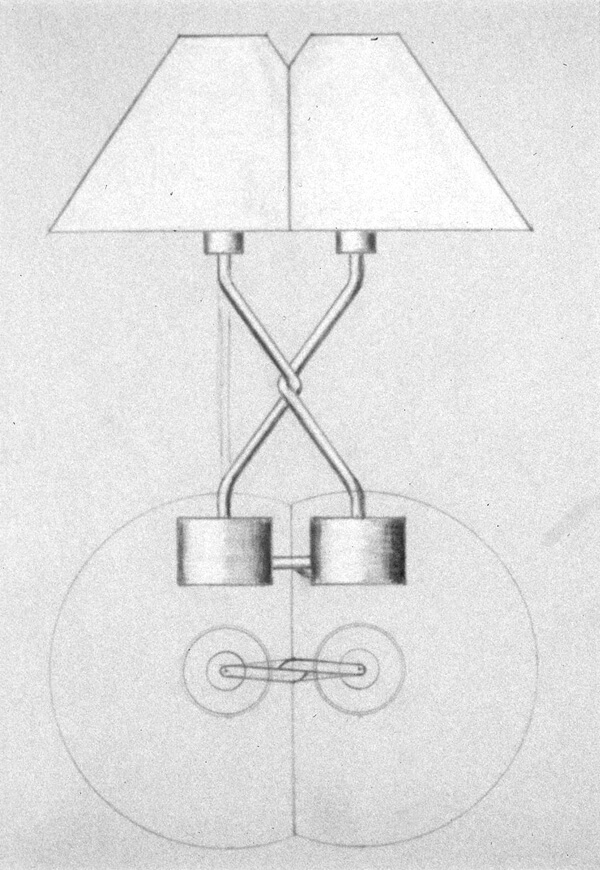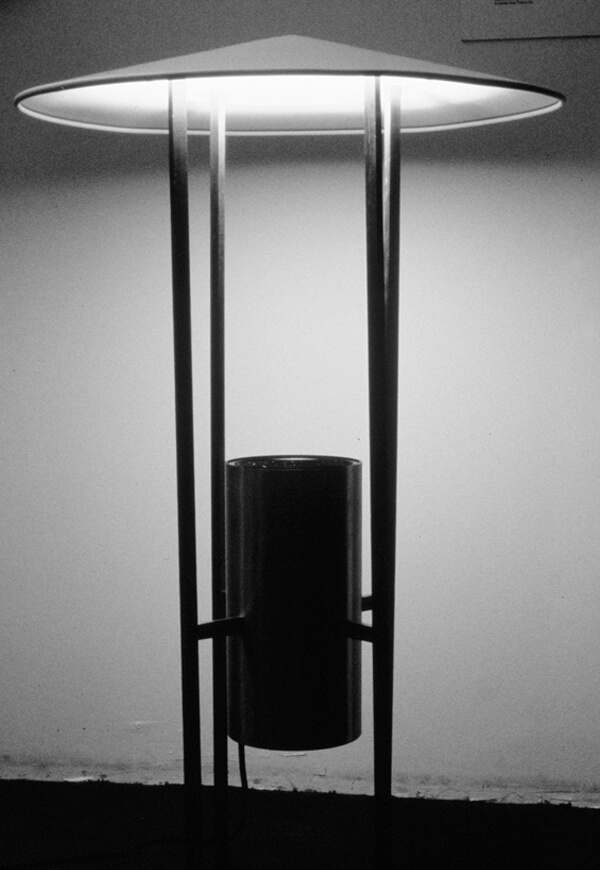Fixture Design
Kelly’s first employment in 1928 was designing fixtures for a New York City manufacturer. Not long thereafter, with Chauncey A. Thompson, he opened Kelly & Thompson for the stated purpose “to design and execute good lighting”. They considered their office a clearinghouse for lighting and made use of equipment from all manufacturers. However, to more closely tailor design solutions to clients’ needs and to fill the gap in “good lighting” fixtures, they designed and produced a line of fixtures. They were primarily portable cord-and-plug lights for residential application, but also included some hard-wired ceiling and wall fixtures as seen in these sketches.

“Three Arms #315”

Untitled #393

Untitled. Intertwined double lamp with shade.

Floor fixture for Philip Johnson. Metal, acrylic and glass.
World War II material restrictions ended this endeavor; however the design of lighting fixtures, especially where suitable ones for a particular application were not available, was a continuing involvement for Kelly. The design of these fixtures not surprisingly parallels Kelly’s overall approach to lighting: the fact that light can be controlled for a desired impact or quality. It’s not uncommon to see baffles and louvers which shield the eye from glare, reflectors and translucent materials used to redirect and/or diffuse the beam, and fixtures which are adjustable in height or swing to more comfortably reach the task at hand.
A floor lamp, designed by Richard Kelly for Philip Johnson, combines an uplight housed in the cylindrical body with a conical reflector/hood overhead. This created a soft pool of local light without any significant surface brightness which would reflect in the glass walls of the residences where it was installed.
No mention of Richard Kelly’s fixture design is complete without acknowledgment of the contributions of Edison Price. Mr. Price was a long-time collaborator in the design, engineering and fabrication of both portable fixtures, including the exhibited lamp, and those designed for permanent installation.
